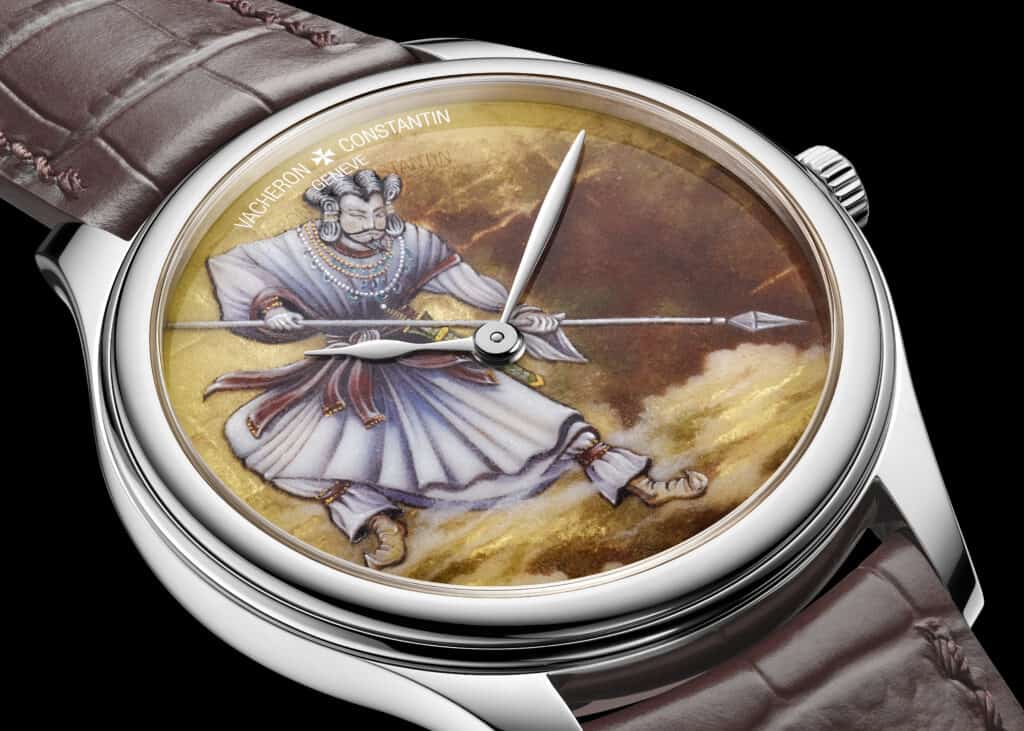Through its Le Temps Divin series, Vacheron Constantin offers a journey towards different cultural horizons, a horological odyssey punctuated by the mechanics of time and staged by artistic crafts.
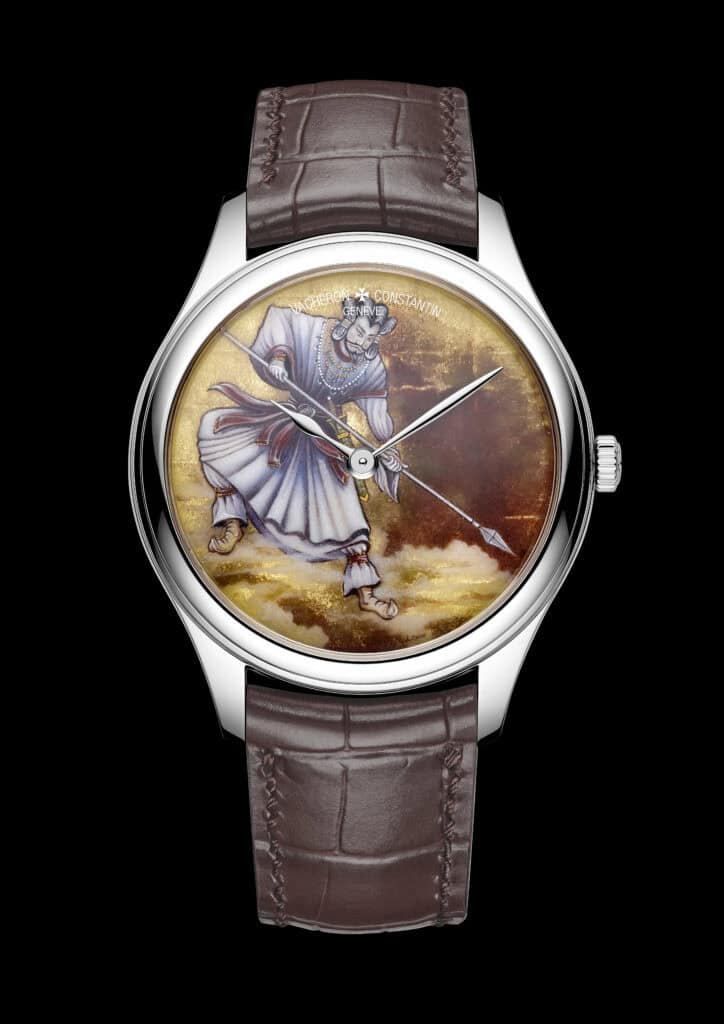
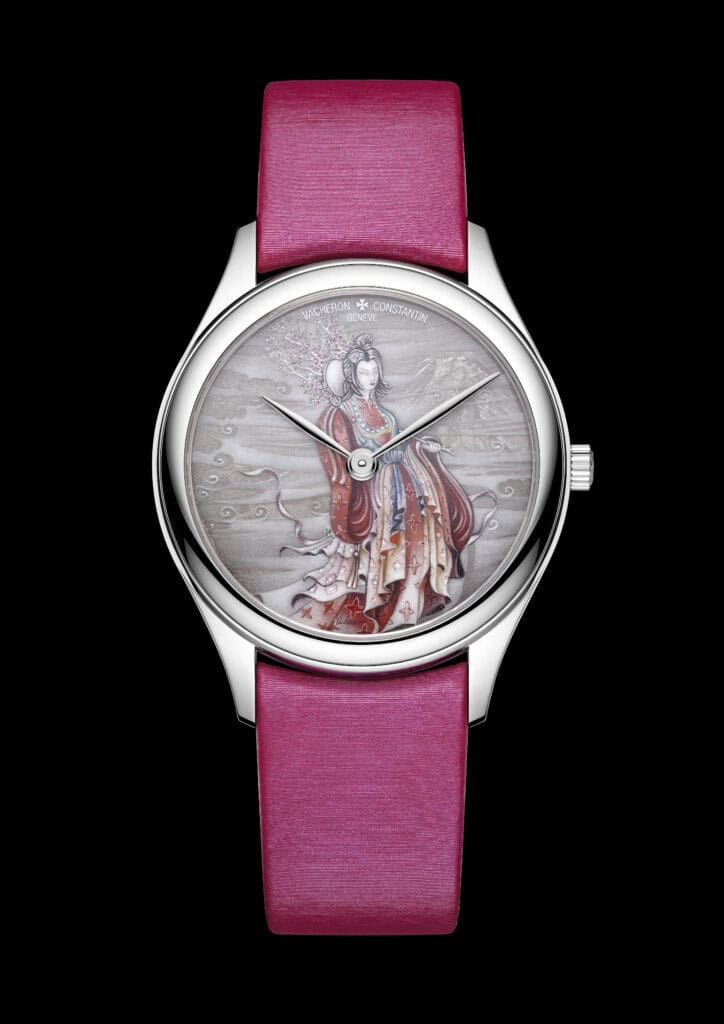
The Les Cabinotiers Le Temps Divin (divine time) series explore the notion of time in its various cultural and conceptual perceptions: physical and linear like a chronology; astronomical and cyclical like the seasons; metaphysical in the infinite stretching of the present moment. To embody metaphysical time, Les Cabinotiers creations turned to Japanese symbolism through three key figures of Shintoism. To depict these kami (divinities) on the dials, the Maison called on the combined skills of its engraver and enameller.
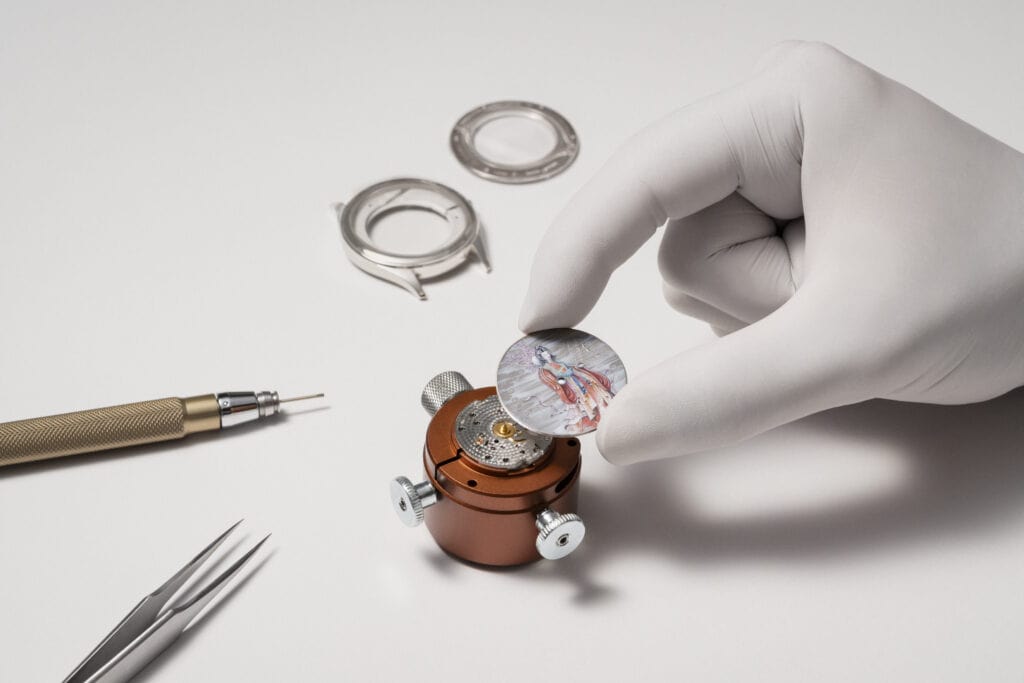
The new series of single-edition timepieces around the theme of Le Temps Divin is a philosophical and cultural quest. In suggesting a return to the mythological origins of Time, Vacheron Constantin has taken an interest in its metaphysical dimension: high-quality time punctuated by the deeds of divinities; as well as intimate time, eternally experienced at the most intense moments.
This abstract form of time is interpreted in a distinctive way through Shintoism. Founded on the sacred quality of Nature, Japan’s most ancient religious features a number of deities, or kami, whose cosmic energy is thought to have exerted a major influence on the Universe. By acting at just the right moment, these divinities changed the course of events, lending a hallowed character to their actions and depth to those fateful moments. By descending to Earth to breathe life into it, the kami created the Japanese archipelago, commissioning the first emperor Jinmu to found the nation. From this communion with the forces of the Universe comes a vision of infinite time, where moments from the past are incredibly vivid in the present.

To embody this metaphysical time, Vacheron Constantin highlights three figures from Shintoism. These references to Japanese culture are not new to the Maison, as testified by numerous early 20th-century artistic crafts models including a “samurai” pocket watch from 1924; an enamelled and gem-set ladies’ brooch watch made the same year featuring Japanese-inspired decoration; along with a lacquered 1935 triptych table clock also adorned with a samurai scene.
The kami depicted on the dials are represented off-centre, as is traditional in Japan. Izanagi, the god of creation, is regarded – along with his sister-wife Izanami – as the founder of Japan. His mission was to give shape to primordial chaos and create a world, which he accomplished by striking the ocean with his sacred spear, giving birth to the Japanese archipelago born of solidified water droplets. On the dial of the timepiece created in his honour, the divinity can be seen pointing his spear at the ocean.
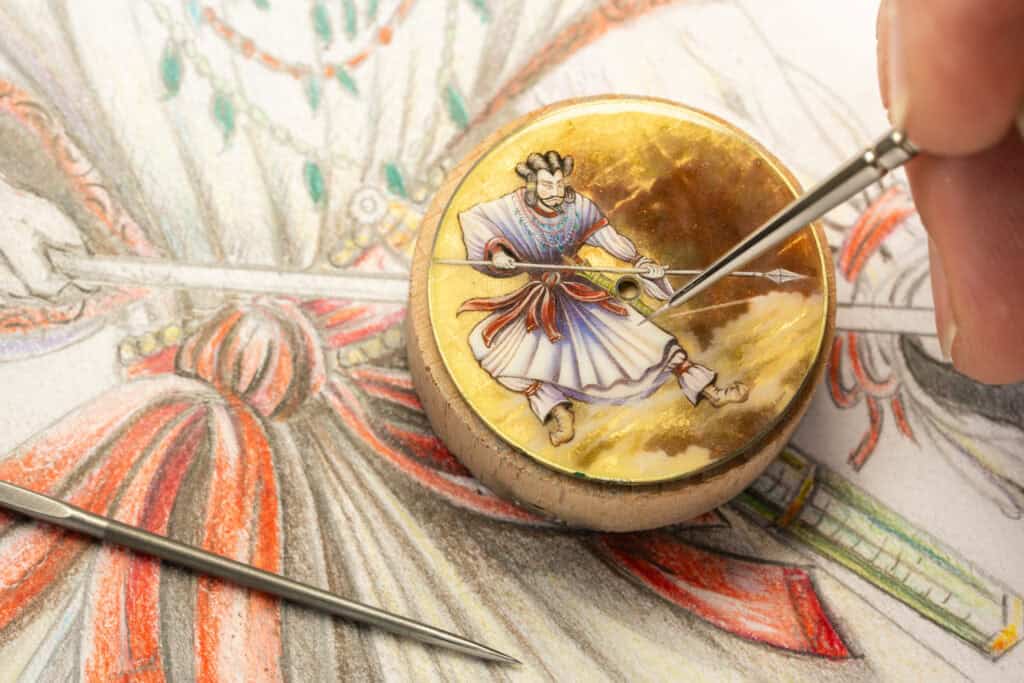
The second model is dedicated to Amaterasu, considered the most important deity in Shintoism. According to mythology, this sun goddess born of the left eye of her father Izanagi gave birth to the line of all Japanese emperors, as well as introducing the cultivation of rice and wheat along with the rearing of silkworms to the archipelago. It is she who symbolically appears on the Japanese flag in the form of a solar disc, with or without rays. This emblematic figure is depicted on the sundial in colourful ceremonial clothes, shrouded in evanescent rays and carrying the sun disc as well as a sakaki branch, the sacred flowering key-tree of Shintoism.
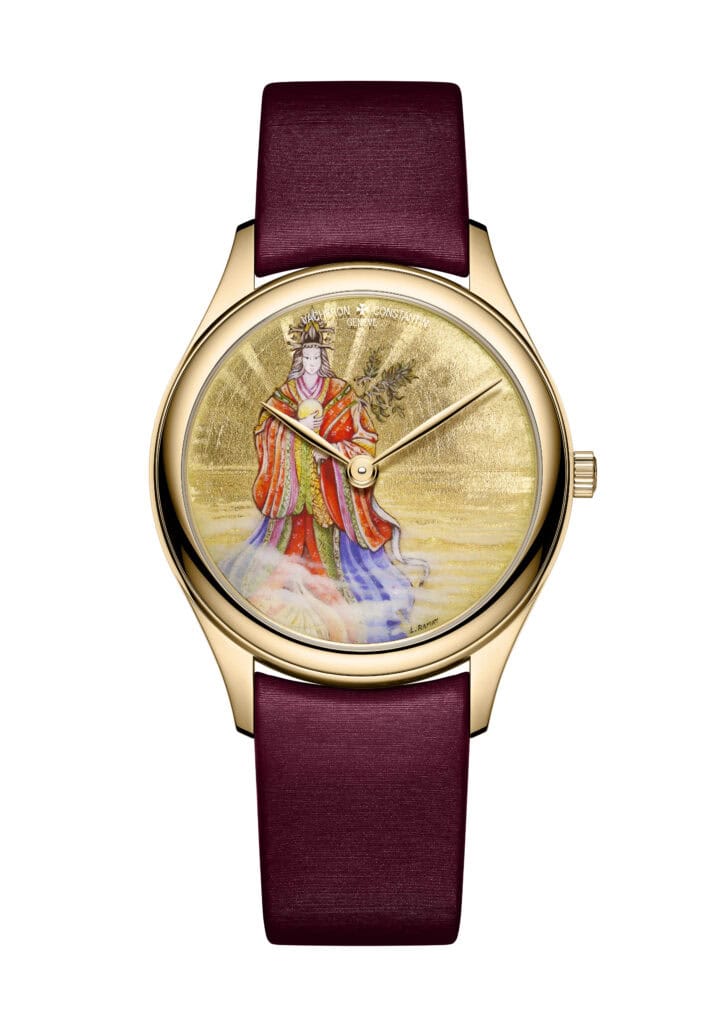
The third timepiece depicts Konohanasakuya-hime, the richly attired goddess of Mount Fuji and all Japan’s volcanoes. Surrounded by the Moon and cherry blossom branches, symbolic attributes of this flower princess, she wears the jūnihitoe court costume from the Heian period (794-1185) traditionally comprising 12 layers of clothing featuring a combination of hues in tune with the seasons. Konohanasakuya-hime was chosen to become the wife of Ninigi, Amaterasu’s grandson, symbolising human life as beautiful as it is fleeting, like cherry blossoms. In the distance, the silhouette of Mount Fuji – the mountain she guarded to prevent it from erupting – can be seen through the mist.
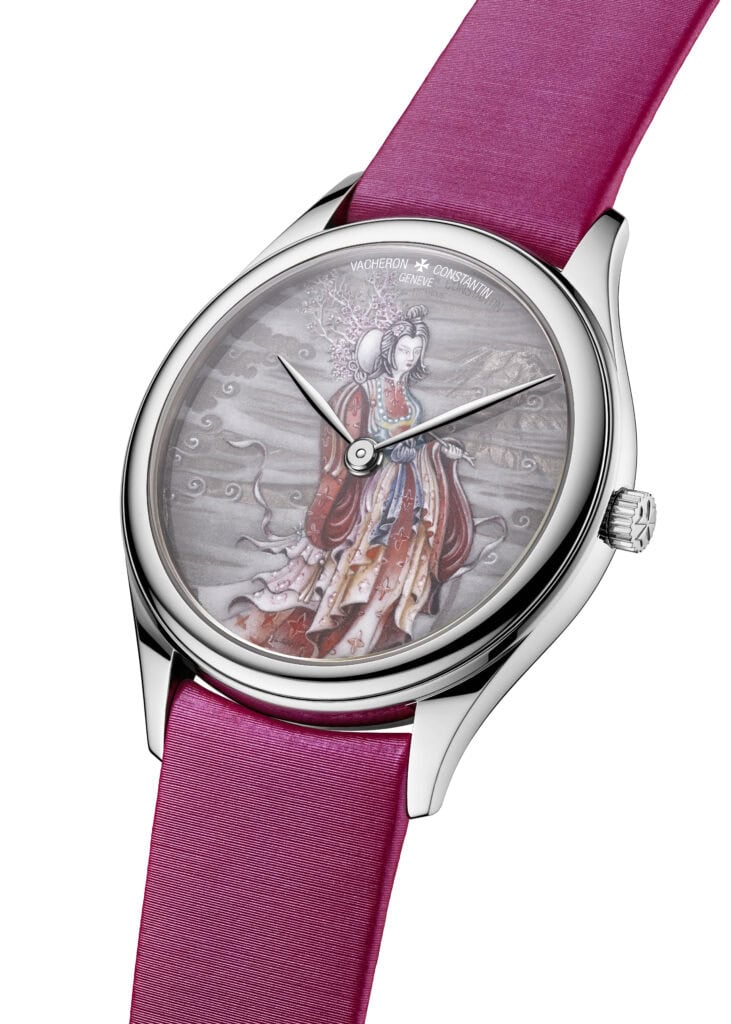
The gold dials of these timepieces undergo an initial engraving stage. To give substance to the deities’ ethereal surroundings composed of mist, clouds and sea foam, the master engraver uses the intaglio technique. Often employed in the world of printmaking, this consists of engraving microgrooves with a drypoint to a depth of just a few hundredths of a millimetre. By creating barbs (name given to the tiny pieces of metal removed), the engraver endows the metal with a unique velvety quality, particularly suited to the decoration of this model that plays on textures and shimmering reflections. After around 20 hours’ work, he coats the dial with a protective layer of translucent flux.
The timepiece is then transferred to the workbench of the enameller, who begins by working the silhouette of the gods in Limoges white, an opalescent enamel powder particularly suited to chiaroscuro effects. Two coats are fired to fix the colours of the decoration and the contours of the kami. Then comes the patient and delicate work of painting the miniature enamel under binoculars, using special brushes with just a few hairs to reproduce the colours and details of the painting. No fewer than six to seven successive coats, each heated to between 800° and 900°C, are needed to achieve the full chromatic richness and depth of this depiction of mythological gods. To finish and add lustre, the master enameller applies two layers of translucent enamel, which are delicately stone-polished to bring out the shapes and colours. Each dial took the enameller three weeks to complete.
Technical Specifications:
Les Cabinotiers – Ode to Amaterasu
Reference
1420C/000J-161C
Hallmark of Geneva certified timepiece
Caliber
1440
Developed and manufactured by Vacheron Constantin
Mechanical self-winding
22.10 mm diameter, 2.60 mm thick
Movement power reserve: approximately 42 hours
4 Hz (28’800 vibrations/hour)
116 components
19 jewels
Indications
Hours and minutes
Case
18K 2N yellow gold
36 mm diameter, 8.00 mm thick
Transparent sapphire crystal caseback
Dial
18K gold, hand-engraved and hand-enamelled Grand Feu miniature, representing Amaterasu
Strap
Red satin with beige lining, hand-stitched
Clasp
18K 2N yellow gold pin buckle
Presentation box & accessory
Les Cabinotiers model
Unique timepiece
‘Pièce unique’, ‘Les Cabinotiers’ and ‘AC’ hallmark engraved on the back of the timepiece
Price upon application
Les Cabinotiers – Ode to Izanagi
Reference
2400C/000G-160C“
Hallmark of Geneva certified timepiece
Caliber
2460
Developed and manufactured by Vacheron Constantin
Mechanical self-winding
26.20 mm diameter, 3.60 mm thick
Movement power reserve: approximately 40 hours
4 Hz (28’800 vibrations/hour)
182 components
27 jewels
Indications
Hours and minutes
Case
18K white gold
40 mm diameter, 9.40 mm thick
Officer caseback
Dial
18K gold, hand-engraved and hand-enamelled Grand Feu miniature, representing Izanagi
Strap
Dark brown Mississippiensis alligator leather with alligator leather inner shell, hand-stitched, saddle-finish, large square scales
Clasp
18K white gold pin buckle
Presentation box & accessory
Les Cabinotiers model
Unique timepiece
‘Pièce unique’, ‘Les Cabinotiers’ and ‘AC’ hallmark engraved on the back of the timepiece
Price upon application
Les Cabinotiers – Ode to Konohanasakuya-hime
Reference
1420C/000G-162C
Hallmark of Geneva certified timepiece
Caliber
1440
Developed and manufactured by Vacheron Constantin
Mechanical self-winding
22.10 mm diameter, 2.60 mm thick
Movement power reserve: approximately 42 hours
4 Hz (28’800 vibrations/hour)
116 components
19 jewels
Indications
Hours and minutes
Case
18K white gold
36 mm diameter, 8.00 mm thick
Transparent sapphire crystal caseback
Dial
Hand-engraved and hand-enameled18K gold with the miniature painting technique, representing Konohanasakuya-hime
Strap
Pink satin with beige lining, hand-stitched
Clasp
18K white gold pin buckle
Presentation box & accessory
Les Cabinotiers model
Unique timepiece
‘Pièce unique’, ‘Les Cabinotiers’ and ‘AC’ hallmark engraved on the back of the timepiece
Price upon application
For more information please visit Vacheron Constantin


